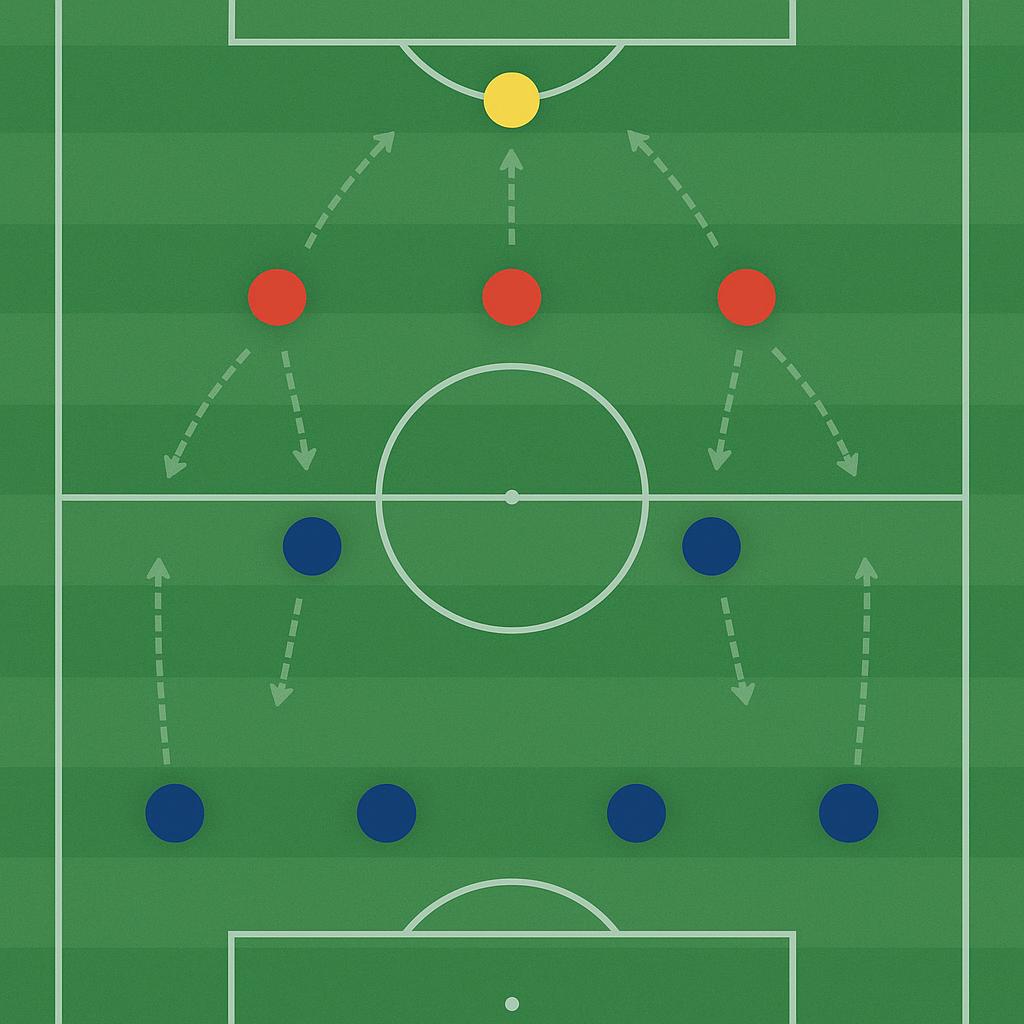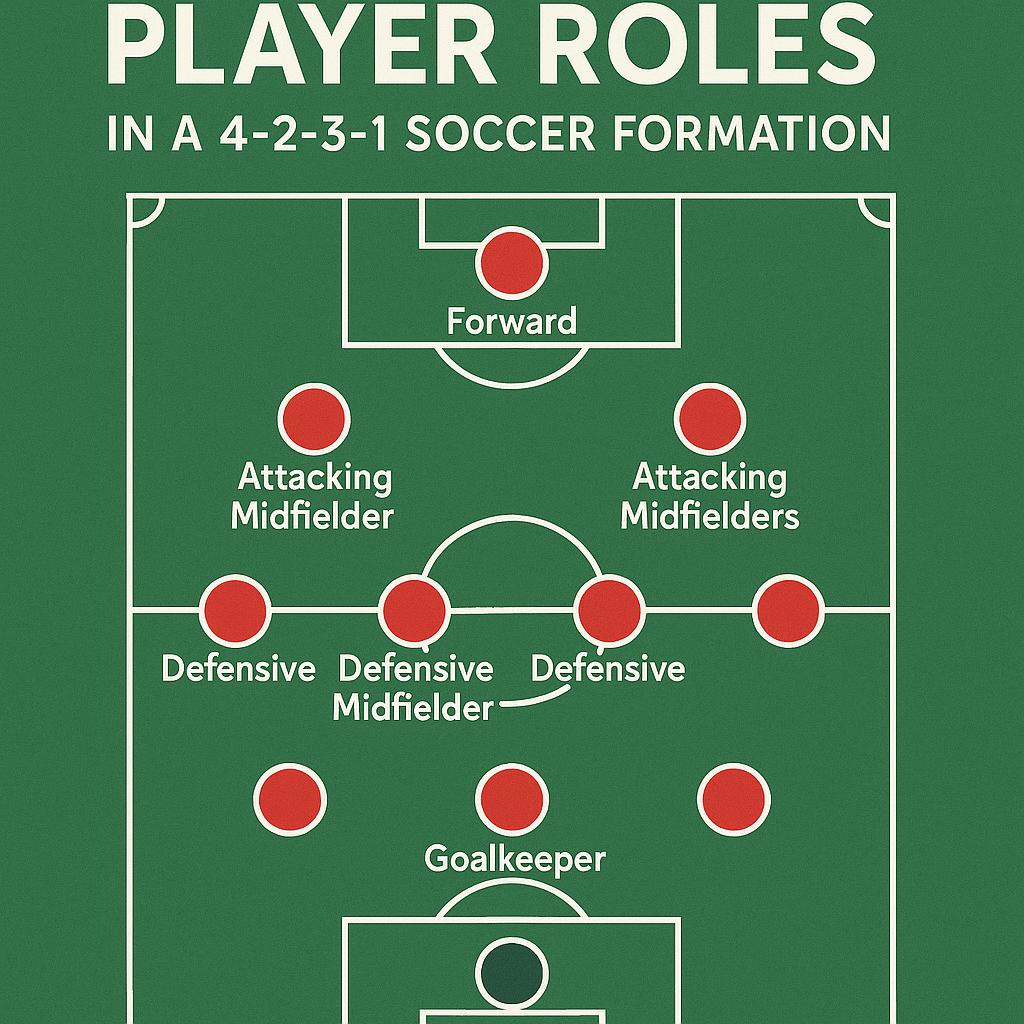Ever wondered what truly makes a soccer team click on the field? Often, it's all about really understanding each player's individual role, especially when you're looking at formations such as the wildly popular 4 2 3 1. This setup is a global favorite among top coaches, from Pep Guardiola to Gareth Southgate, and there's a really good reason it's so popular. It strikes a remarkable balance between defensive solidity and attacking flair. But how exactly do players fit into this intricate system? Let's dive into each position, exploring the responsibilities that truly make this formation shine.
The Versatility of the 4 2 3 1 Formation
The 4 2 3 1 isn't just a random bunch of players thrown together. It's an incredibly versatile system, letting teams smoothly switch from a solid defense to an explosive attack.
Think about it: it's got a really strong defensive backbone. Four defenders and two defensive midfielders offer plenty of cover for the backline. At the same time, the trio of attacking midfielders and one striker create loads of ways to score. This balance largely explains why it's so widely adopted in modern football. Coaches like Mauricio Pochettino and Hansi Flick champion it. They value its flexibility for controlling both the middle and wide areas of the pitch. It's truly a system that adapts well to all sorts of game situations. This makes it a powerful tool in any coach's toolkit.

The Goalkeeper, The Foundation of Everything
Every truly great team absolutely relies on a dependable goalkeeper. In the 4 2 3 1 setup, the goalkeeper is much more than someone who just stops shots. They're not just the first line of defense. They're also the spark for starting attacks.
A modern goalkeeper, often playing as a 'sweeper keeper', needs fantastic passing skills. They have to be able to launch quick counter attacks with accurate throws or long passes. What's more, they're vital for organizing the defense, taking charge of their penalty area, and clearly communicating with their backline. Take Manuel Neuer, for example. He doesn't just make incredible saves. He also practically acts like an extra outfield player, happy to leave his line to snuff out threats. Their anticipation and well timed decisions can really set the game's pace from deep in their own half.
The Defensive Line, The Unsung Heroes
The four defenders in your team lay down the very foundation of the 4 2 3 1. Their disciplined work ensures the team stays solid defensively. This then frees up the attacking players to truly express their talents.
Fullbacks, The Energetic Wide Players
In the 4 2 3 1, your fullbacks are genuinely tireless. They just never stop running. They have huge attacking responsibilities. This often means overlapping their wingers to provide width and whip crosses into the penalty area. Think of Trent Alexander Arnold's wide assists, or Dani Alves's never ending attacking runs.
But their defensive duties are just as critical. They have to diligently track back and mark opposing wingers. They also need to prevent crosses and contribute to winning the ball back. This demands incredible stamina, raw pace, and sharp tactical awareness. They're constantly charging up and down the flanks, contributing everywhere and giving crucial support to their teammates.
Center Backs, The Pillars of Defense
Your two center backs are, without a doubt, the heart of the defense. Their main duties involve marking opposition strikers. They also need to win aerial duels and make vital tackles and interceptions. They need to be physically dominant, great in the air, and have an exceptional sense of where to be.
Beyond their defensive duties, modern center backs are also key in building plays from the back. They start attacks with precise short and long passes. Their partnership requires seamless communication and total trust. They have to anticipate each other's movements to effectively cover any gaps in defense. Players like Virgil van Dijk perfectly show off this combination of defensive strength and composure on the ball. They're the last protective barrier before the goalkeeper. They soak up pressure and ensure overall stability.
The Double Pivot, The Engine Room
The two defensive midfielders, often called the 'double pivot', form the absolute core of the 4 2 3 1. They're absolutely critical for maintaining team balance. They shield the defense and smoothly link play between the backline and the attack.
Defensive Midfielders, The Shield and Connector
These two defensive midfielders truly are the unsung heroes, often doing the less glamorous but vital work. Their main jobs include shielding the defense. They also break up opposition attacks, win second balls, and intercept crucial passes.
One might operate more as a traditional 'destroyer', focusing on tackling and breaking up the opponent's rhythm. The other, perhaps a deeper lying playmaker or 'Regista', could control the tempo with their passing. Think of Sergio Busquets's masterful control of the midfield. Or perhaps N'Golo Kante's astonishing ground coverage. They provide the defensive security. This lets the attacking players further up the pitch confidently take calculated risks. Their positional discipline and knack for winning back the ball and keeping it are absolutely essential for maintaining game control.
The Attacking Midfielders, The Creative Force
This is exactly where the 4 2 3 1 truly shines on offense. Three dynamic players sit right behind the striker, ready to tear apart opposing defenses.
Wingers, The Wide Threats
Your two wingers in the 4 2 3 1, often playing as left and right attacking midfielders, are responsible for providing width in attack and creating scoring chances. They might stick to the touchline, aiming to whip in crosses. Or, they can cut inside onto their strong foot to shoot or link up with teammates. They also have significant defensive tracking duties. They help out their fullbacks. Mohamed Salah or Neymar are great examples. They blend explosive dribbling with impressive goal scoring ability. Their knack for beating a defender one on one, or delivering a precise pass, can truly swing a game's momentum.
Attacking Midfielder, The Number 10
Often called the team's main playmaker, the central attacking midfielder, usually known as the 'Number 10', works in that crucial area between the opposition's midfield and defensive lines. Their primary role involves linking midfield and attack. This means threading sharp through balls, taking shots, and orchestrating complex offensive movements. They're usually the most technically gifted player on the field. They have exceptional vision, superb dribbling ability, and a real knack for finding the net. Kevin De Bruyne's uncanny ability to thread a pass. Or Bruno Fernandes's prolific goal scoring from this very position highlight just how important they are. This player acts as the creative hub, always looking to exploit defensive gaps and set up scoring opportunities.
The Lone Striker, The Spearhead
At the very top of the formation sits the lone striker, who's the team's main goal threat.
Striker, The Finisher and Presser
The striker in a 4 2 3 1 isn't just about scoring goals. While that's their most important job, there's more to it than that. They also need to be good at holding up play. They link up with the attacking midfielders and press opposition defenders to force mistakes and win the ball back. Depending on the player's specific style, they might operate as a target man, a quick poacher, or even a 'false nine' who drops deep to pull defenders out of position. Harry Kane's ability to score, assist, and drop deep perfectly shows this multifaceted role. Their off the ball movement is absolutely crucial for creating space. This benefits both themselves and their teammates, as they constantly look to exploit defensive weaknesses.
Team Cohesion and Adaptability, Beyond Individual Roles
Understanding individual roles is just the first step. The real strength of the 4 2 3 1 comes from how these roles interact and truly support each other. Team cohesion, knowing exactly when to cover for a teammate, and the ability to adapt to changing game situations are all super important. A well drilled team understands how to switch from a defensive block to an attacking surge in mere seconds. Every player understands their exact position and responsibility during these crucial transitions. This level of tactical understanding doesn't happen by accident. It requires meticulous coaching and incredibly clear communication.
Here's where modern coaching tools become absolutely essential. Consider a coach trying to explain complex defensive shape adjustments or offensive movement patterns on a traditional whiteboard. But with a cool tool like SPLY, the video soccer coach board, coaches can really step up this whole process. SPLY lets you create tactical boards, edit them in real time, and most importantly, share them as videos. You can even put your face and voice right into the board video while you're sketching or moving players around. This visual and auditory explanation really helps players understand their roles and responsibilities within the 4 2 3 1 setup. It turns abstract tactical ideas into concrete, easy to understand concepts. It makes sure every player, from the goalkeeper to the lone striker, knows exactly what's expected in every phase of the game.

To sum it all up, the 4 2 3 1 formation truly shows how football's tactical landscape is always changing. Its lasting popularity really comes from its inherent balance and impressive flexibility. However, its success doesn't just depend on the system itself. It relies heavily on each player understanding and really performing well in their unique roles. From the goalkeeper starting plays to the lone striker leading the attack, every single position acts as a vital piece in the overall machine. Mastering these complex responsibilities is absolutely essential for any team hoping to succeed on the field. For coaches and budding players alike, improving your tactical understanding is an ongoing journey. Exploring innovative tools, like the SPLY app, can really boost this learning process. It makes complex tactical concepts easy to grasp and put into action for your team. By genuinely appreciating each player's contribution, you can truly unlock the full potential of this dynamic formation.
